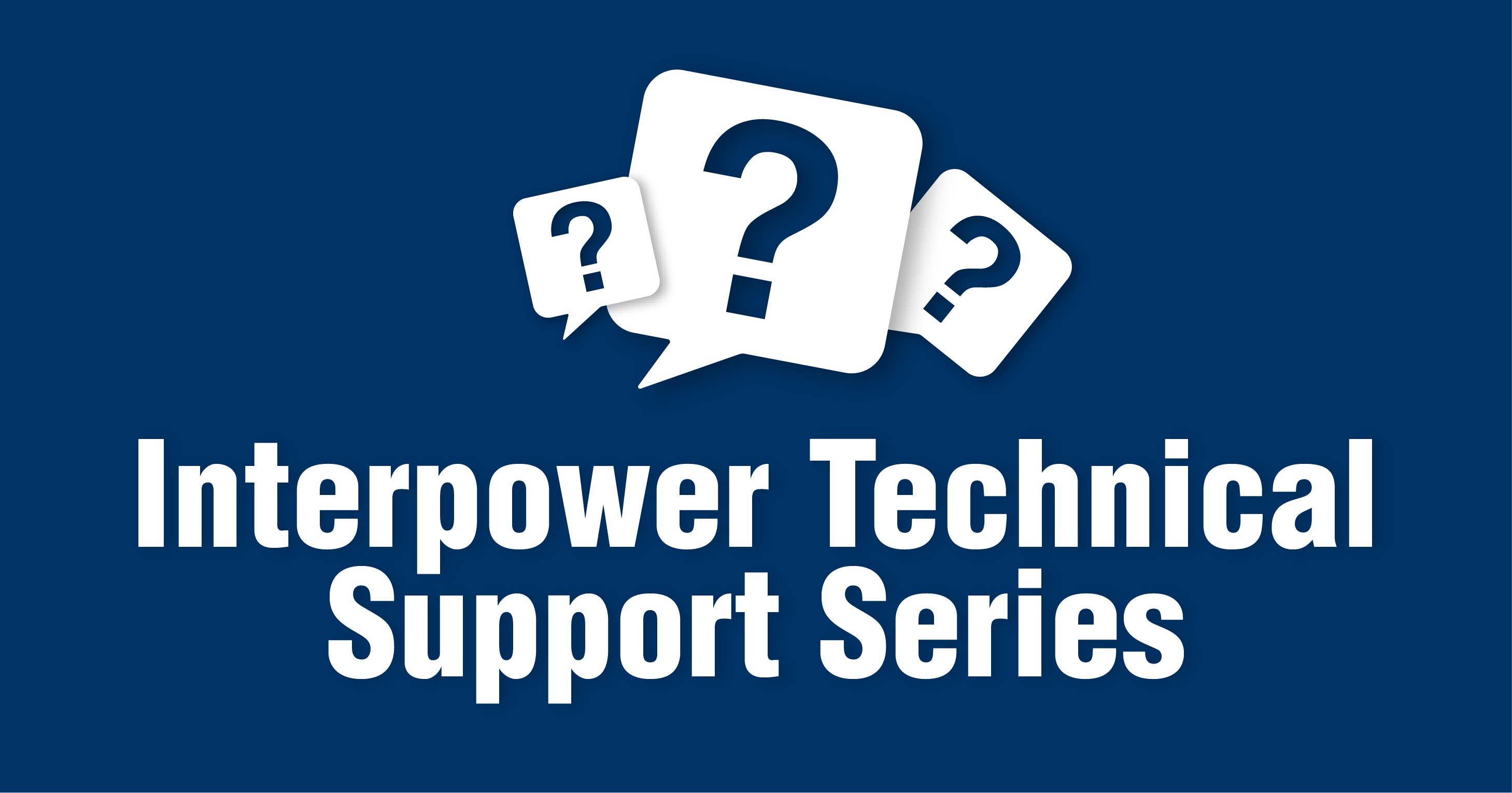Interpower Technical Support Series: Customer Questions for Dan Ford, Interpower Technical Support Specialist
Posted on 8/21/23 9:48 AM
Universal Jumper Cord Set/Appliance Couplers
Q: Our company spec sheet shows the cable we’ve been using is rated at 10A. However, the cable we received is rated “12A.” If the cable is rated at 10A, and one of the two connectors is rated at 10A but the other connector is rated at 12A, we don’t want people thinking it’s ok to run 11A of current through a 10A cable. The temperature rating is also different. Could you clarify these differences?
A: Sure. The important thing to remember with any cord set is that the ampacity always defers to the lowest rated component, which in this case is 10A. This IEC 60320 jumper cord set is measured in both metric and standardized U.S. lengths based on geographic preference. We list both measurements since the lengths are equivalent.
"Ampacity always defers
to the lowest rated component."
The temperature ratings set by agencies from two different continents are also different, in this case UL and IEC—North America lists 60°C while the international maximum rating is 70°C. There is also a misnomered or misclassified plug type. On one end of the cord is an IEC 60320 Sheet E “plug connector” while the opposite end bears and IEC 60320 “connector.”
"The IEC 60320 Sheet E is often misclassified."
This misclassification stems from faulty industrywide nomenclature where the Sheet E is often referenced as a C14. So, while a Sheet E is a plug connector per the IEC 60320 standard and a C13 is a connector, the C14 is an “inlet” that is panel mounted. They are part of the 10A/15A family of international and North American appliance couplers respectively.
Because IEC jumper cords meet two standards from agencies headquartered in different parts of the world, they have North American and international (dual) ratings:
- Sheet E plug-connector:
International rating = 10A
North American rating = 15A - 1.00mm²/17AWG cable:
International (1.00mm²) rating = 10A
North American (17AWG) = 12A - C13 Connector:
International rating = 10A
North American rating = 15A
In reviewing the above ratings, we note that the International rating for all three components is 10A, making the International rating for the assembly 10A; but the cable rating on the North American side of the ratings is the lowest at 12A—this limits the North American assembly usage rating at 12A for the entire assembly.
When writing the rating for this assembly, both ratings must be included in the specification. Therefore, the complete rating for the assembly is 10A for International, but 12A for North America, or more simply put 10/12A as listed on our specification. Simply listing 10A as the rating is an incorrect listing of the product, since it is a hybrid assembly (due to the cable used) meant for nearly worldwide use, but different ratings based on geographical location.
Hospital-Grade Cord Length
Q: Can I use a hospital-grade cord longer than 20 feet? If so, how do I calculate cord length when the cord is plugged in an accessory power strip with other cords?
A: Yes, and no. Once you get beyond the 12- to 15-foot length for medical cords, it becomes more difficult to meet the UL standard requirements for North American hospital-grade cords—you’re getting resistance and current leakage from the electrical design. Longer cords have more leakage current and may cause problems meeting equipment leakage requirements. You also don’t want high levels of EMI/RFI in equipment attached to the patient, as some longer cords can act as an antenna and bring in more interference. Currently the UL 817 standard does not specify a maximum length for hospital grade cord length, with the exception of hospital grade extension cords, which are limited to 15 feet. This is likely due to there being hundreds of standards covering a host of medical equipment with differing requirements.
"Hospital-Grade extension
cords are limited to 15 feet."
Topics: product design, Jumper Cords, hospital-grade cords, technical-support






